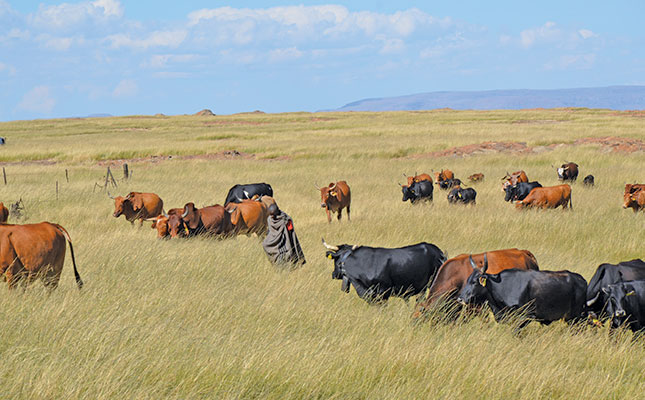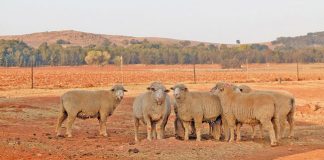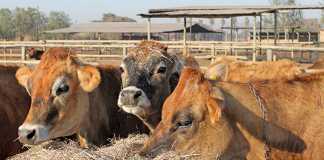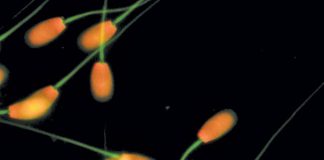
Photo: Supplied
Short-duration, low-input overnight kraaling can work wonders for rehabilitating degraded sites or fertilising fallow or abandoned cropland in moist grasslands. Short-duration kraaling can lead to increased grass cover on such bare patches, but, surprisingly, it can lead to more bare ground if kraaling is done where the grass cover is intact.
This is according to research carried out on communal farms in the southern reaches of the Drakensburg in the Matatiele Local Municipality in the Eastern Cape, an area that receives 710mm summer rain per year.
As with other communally grazed mountain grassland areas in the Eastern Cape, the study area is largely characterised by moderate to steep slopes, high stocking rates (up to 1,5 MLU/ ha where 0,25 MLU/ha is recommended), continuous grazing of cattle, sheep and goats, little co-ordinated grazing management, and widespread soil erosion and veld degradation.
In addition, invasion by exotic woody species such as wattle has resulted in loss of grass cover and changed soil characteristics, leading to large bare patches with little recovery after clearing.
The study
There is thus a need for simple, low-cost and effective restoration techniques, especially ones that are feasible and acceptable to livestock owners in communal rangelands.
Planned grazing and resting of veld with the use of herders is already experiencing a revival in the study area, and is showing positive results. Short-duration overnight kraaling seems to be another good candidate, provided it is done correctly.
For the study, livestock were kraaled on areas left bare after wattle clearing or from overgrazing, and in areas that had relatively intact grass cover. The effects of kraaling were also compared between times when the soil was wet from rain and when soils were dry to ascertain whether this made a difference.
Animals were herded in unfenced grazing camps outside the villages and allowed to graze freely on native grasslands between sunrise and sunset. The herds, of between 123 and 250 cattle and 115 to 286 small stock, were then kept overnight in movable circular kraals approximately 50m² in size and constructed from poles, netting and electrified wire.
The effect on soils and vegetation was assessed by comparing the kraaled areas with areas close by that had not been used for kraaling.
The results showed that the initial condition of the veld was critical in determining the outcome. Very bare areas, including those left after wattle clearing, showed an increase in grass cover.
However, areas that originally had an intact grass layer actually lost grass cover. The most likely explanation is that bunch grasses are not adapted to high animal densities and/or high nutrient deposition. Kraaling on steep slopes also led to more bare ground. The grass composition was not greatly affected by kraaling. This was most likely because the grasses that were common at the site initially were mostly tough, grazing-resistant species such as taaipol (Eragrostis plana).
Sites that started with low soil phosphorus and carbon showed an increase in these important soil nutrients. Overall, however, effects on soil nutrients were minimal.
Infiltration was improved when kraaling took place on wet soils (during or after rain). In contrast, infiltration decreased when kraaling was carried out on dry soils.
The study suggests that results from previous studies done in other vegetation types must be viewed with caution when considering short-duration kraaling to manage moist mountain grasslands.
Practical management
The practical management recommendations based on the findings are that kraaling can redistribute and concentrate nutrients and grass seeds by grazing in the surrounding vegetation and excreting in the kraals. However, these positive effects are limited to areas that are bare to start with.
Kraaling should be avoided on veld in good condition or with high basal cover, as it can lead to more, not less, bare ground. Ideally, kraals in these grasslands should be placed on abandoned cropland or otherwise bare areas, such as those left after clearing of invasive woody trees.
Farmers should also be aware of environmental factors at the time and location of kraaling, such as slope, and timing of rainfall. Steep areas are often relatively bare and may easily erode with kraaling. Kraaling can decrease soil infiltration if done during dry periods, and is best avoided during the dry season.
More research needed
The kraaling study was conducted as part of a development project involving livestock owners and their animals, and all decisions were made with the livestock owners.
One result emerged clearly: there is no one-size-fits-all solution regarding kraaling. The suitability of kraaling should thus be evaluated per vegetation type and local conditions before applying and recommending it widely.
Source: Hawkins H-J, Mgwali, N & Vetter S. 2021. ‘Effects of short-duration kraaling in mesic grassland’. African Journal of Range & Forage Science.
Email Dr Heidi-Jayne Hawkins of Conservation SA at [email protected].













